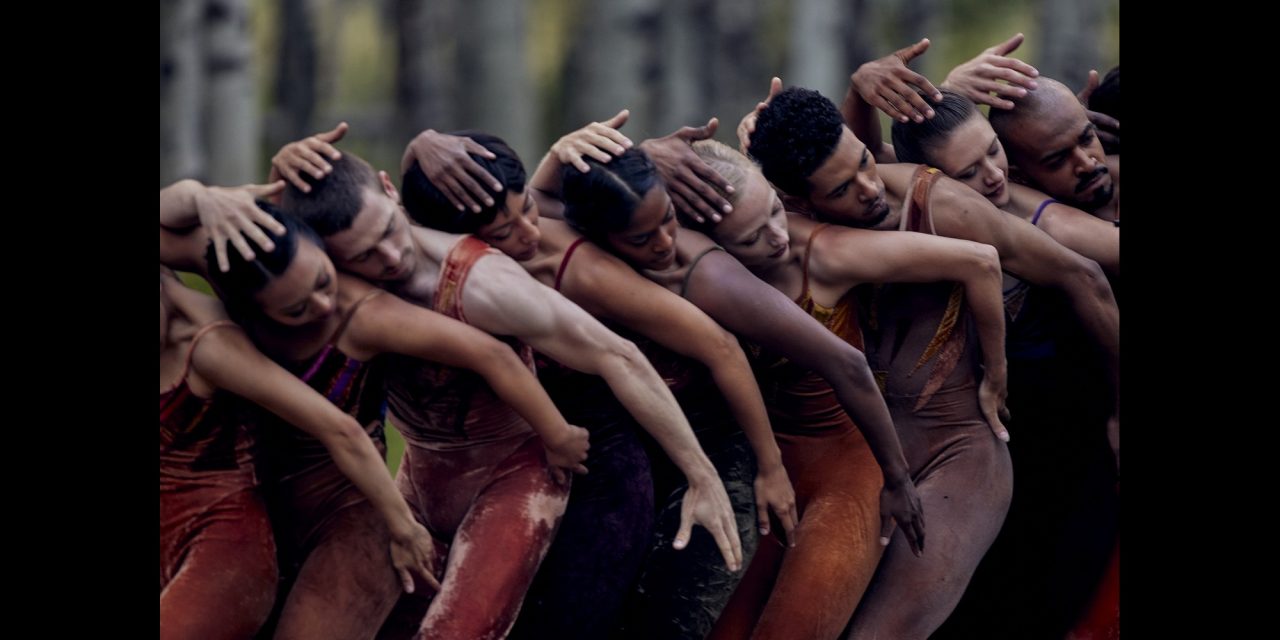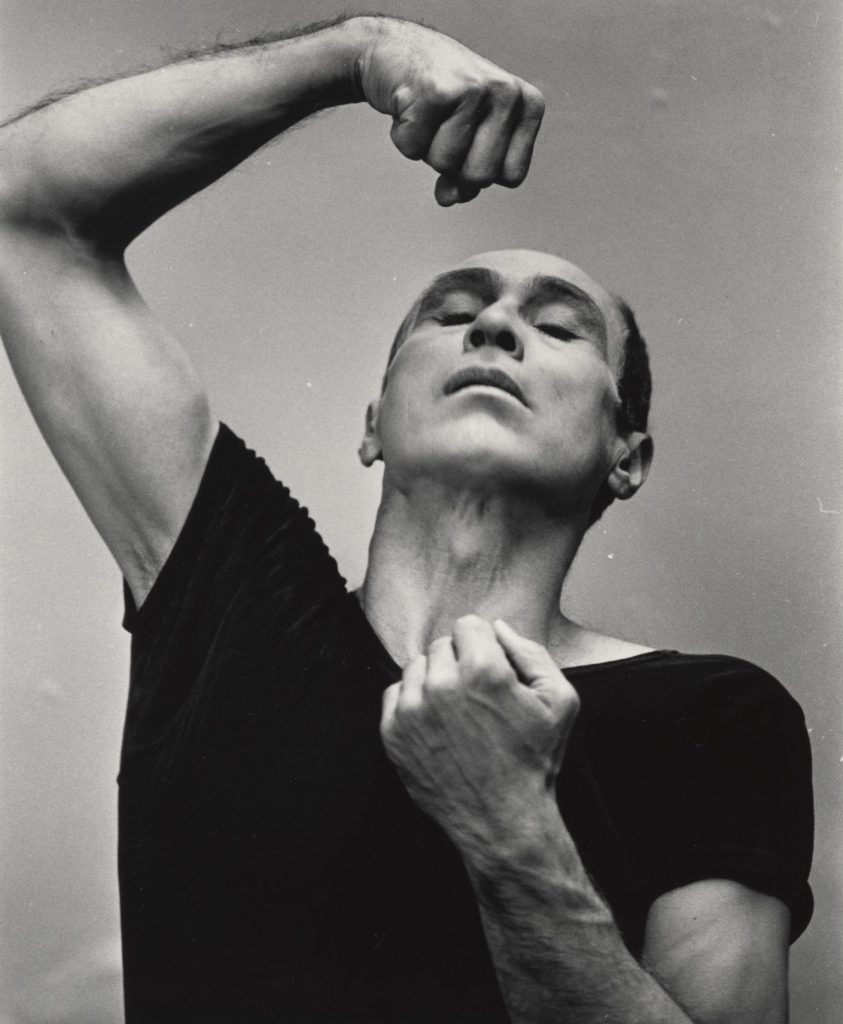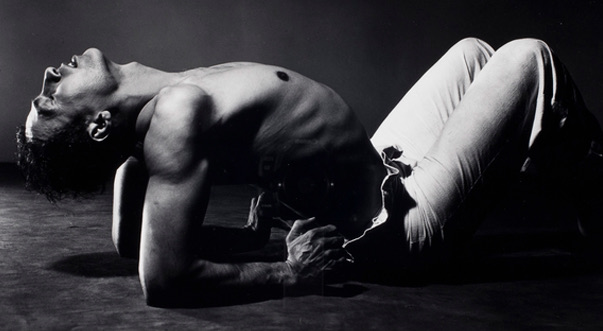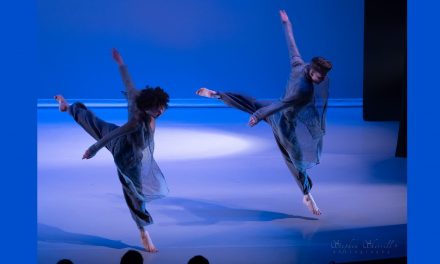One of America’s most beloved and acclaimed companies, the José Limón Dance Company, will celebrate its 75th Anniversary with a two week run live at the Joyce Theater in New York City April 19 – May 1, 2022. Led by Artistic Director Dante Puleio, the company will present two programs, one each week, honoring the legacy of José Limón while looking forward with new works by choreographers Olivier Tarpaga and Raúl Tamez.
José Limón was born in Culiacán, Mexico on January 12, 1908. Along with Doris Humphrey, he founded The José Limón Dance Company in 1946 and it was not long before the company was considered one of the most influential modern dance companies nationally and internationally. One of Limón’s most famous works The Moor’s Pavane (1949) a 20-minute ballet based upon the tragedy Othello by William Shakespeare has been performed by both ballet and modern dance companies. The original cast of The Moor’s Pavane included such modern dance luminaries as José Limón (The Moor), Betty Jones (The Moor’s Wife), Lucas Hoving (His Friend) and Pauline Koner (His Friend’s Wife).
Doris Humphrey was the first artistic director of the Limon Company, followed by Jose Limon. Following Limón’s death in 1972, the job was taken over by Carla Maxwell and finally Dante Puleio. I was fortunate enough to speak with Dante Puleio via Zoom where I learned more about his thoughts on this milestone anniversary season. Before joining the José Limón Dance Company, Puleio trained in London at the Laban Centre, the Northern School of Contemporary Dance and graduated with his BFA from the University of Arts in Philadelphia. He danced with the Limón Company from 2000 to 2002; left to work in theater and tv productions; and then returned to Limón performing principal roles from 2007 to 2014. Prior to becoming the Artistic Director, Puleio earned his MFA at the University of California, Irvine where he studied with dance legend Donald McKayle.
In answer to my question regarding when he took on the position of Artistic Director, Puleio said that the job was handed over to him just as the pandemic shut everything down in 2020. He added, however, that he was able to use that time to make several transitions in the company and to clarify what direction he felt that it needed to go. Puleio wants the youth of today and into the future to become as interested in learning about and attending performances of the José Limón Dance Company as past generations.
As the new artistic director, Puleio was very interested in researching and understanding the meaning behind José Limón’s work. What was he thinking about when he made certain dances and/or what inspired him to create a specific work. Because Puleio had not worked directly with Limón he turned to his notes and researched what was transpiring in the world at the time a dance was made.
One of Limón’s earliest works, Danzas Mexicanas, is appearing on Program II (week 2). The dance was created in 1939 and built from a series of solos. “Because I did not work directly with José Limón like Carla Maxwell, I had to reverse the process,” Puleio said. What he meant was that he had to start with the dance and then try to figure out what Limón was thinking or experiencing at the time. What was he going through as a Mexican working in a predominately white art form? What did his countrymen and women have to endure throughout history in the US? Understanding that definitely helped Puleio reconstruct the work while translating what his research had discovered to the dancers.
I commented that the information that he had gathered would be invaluable to dance historians. “I hope so,” Puleio said with a soft chuckle. “I sure hope. That’s the plan!”
In the press release for the 75th Anniversary performance at the Joyce Theatre, the phrase “Honor and Advance” was used to help describe the goal behind the company’s looking forward. I asked Puleio to elaborate.
“It is so important that in 75 years this brand, this organization, foundation has accumulated a really wide audience,” he said. “I want to make sure that that family, that community, that group of people that have been such dedicated loyalists and followers over the past 75 years are still inspired by what they see and still believe in what we are doing. So, it is really important for me to honor them, honor José’s memory – who he was and why he made the works he did – to honor the intention.”
With this in mind, Puleio is well aware that he has to also think about the next generation and for the company to have a future, he has to consider what might speak to or engage a 20 year when they attend a concert of the José Limón Dance Company. He realizes that this generation is watching all kinds of crazy stuff on platforms such as Tic Toc and that a 20 year old might not be interested in the historical aspect of a dance.
“If they are,” he continued. “I have to contextualize or frame it in a way that engages them, that speaks to them. Everything that I do is through this lens of does this honor who he (Limón) was and why he made the works he did and does that speak to those who are having a human experience right now? So, how do we advance the legacy in a way that is authentic by honoring the past? I am constantly juggling those two perspectives.”
Speaking of the future, I was interested in how Puleio chose the guest artists who will be performing Jose Limon’s work titled Chaconne and the two current choreographers, Olivier Tarpaga and Raúl Tamez, to create new work for the company. He explained that he felt that it was important to select dance artists who were making a statement in the field right now. He said that Donovan Reed who currently is working with Kyle Abraham was really making an impact as a performer and feels that it is important for a body and perform such as Reed is seen doing this work. Amanda Kmett’Pendry is in another legacy company, the Trisha Brown Dance Company.
“How do we build relationships in these collaborations with other artists and performers? I wanted to make sure that we were honoring these great dancers of today as José was considered one of the great dancers of his day,” Puleio said. “So with all these great dancers or artists of today who are doing great works for other choreographers, how do we build bridges moving forward at this time while we’re have this renaissance in dance is to move forward together.” Therefore Puleio hopes to build as many of those bridges as possible.
One of the commissioned choreographers is Olivier Tarpaga, a dancer, choreographer, musician, composer, songwriter, performing arts consultant and storyteller originally from Burkina Faso. He is the founder and artistic director of the internationally acclaimed Dafra Drum (traditional Manding music) since 1995 and Dafra Kura Band (Contemporary African acoustic music) since 2011 and a co-founder of Burkina Faso’s internationally acclaimed “Compagnie Ta.”
It was while listening to Tarpaga talking about growing up in Burkina Faso during a presentation that Puleio thought that Tarpaga’s stories reminded him about stories about Limón. “Like growing up in a war torn country,” Puleio said. “Class revolution. He saw his uncle killed in front of him at the same age José saw his uncle killed in front of him. His father was a musician just like José’s father was a musician. I was like, this is wild overlap.” Puleio had worked with Tarpaga before and knew that with these two artists sharing such similar backgrounds and their work having similar themes of the resilience of the human spirit to triumph that it would be extremely interesting to see these two artists’ work appearing on the same program.
“Oh yes, this makes sense,” Puleio had said to himself. “And that’s how I ended up bringing back Psalm to have a conversation with Olivier’s (Tarpaga) work because there’s such an overlap there. So now we can have this conversation about what makes an artist and how do you end up telling your story. It’s a great way to honor José while advancing his legacy.”
The other guest choreographer is the first Mexican choreographer who has created a work on the company since Limón. His name is Raúl Tamez and he received two ‘Lunas del Auditorio,’ one of the most prestigious awards for performing arts in Mexico, recognizing the creation of the International Contemporary Dance Festival of Mexico City. In 2016, Tamez also won the ‘National Dance Award of Mexico’.
“So, again,” Puleio said. “We are honoring the past, honoring who José Limón was while advancing into the future, who is the next generation of Mexican choreographers. It is part of our responsibility to be part of that process.”
Puleio related that Tamez had created an amazing new piece speaking to a 1951 work by Limón titled Tonantzintla that was commissioned by Bellas de Artes in Mexico City. He explained that Limon’s work was celebrating the baroque era of artistry in this one church in Mexico where inside one could see all the cosmology of the native cultural voices that helped build the church.
“You would see the entire arc of history of religion through this one church,” he said and commented that Limón had made this wonderful piece celebrating the artistry and beauty of this church. “Raúl (Tamez) and I were having this conversation of what is that actually about? There’s a darker underbelly of colonization here. He (Tamez) made a work that speaks to that; what is it like to have a colonized body? What actually happened during those 300 years? What happened to those communities was lost languages, lost lands that the Europeans were standing on. So, he made a work that honors the past but pushes it forward into the new world.”
When asked if the Limón Company would be touring California, Puleio told me that they were in negotiations for that very thing to happen. He was also very excited about the company’s upcoming summer which he called their “dream summer tour.”
“We have Jacobs Pillow, Vail Dance Festival, Bellas Artes, and we are at ADF (American Dance Festival),” Puleio said. “We’re hitting all the major ones, so it is a very exciting summer.”
As always, my final question for Puleio was to let readers know something about the company or the performance at the Joyce that we had not already discussed.
“The most important thing is this confluence of cultures,” he said. “They lived within him (Limón). He had this overlap of this indigenous culture and the European settler inside his heritage. In order for him to come to terms with that and to create the body of work that he did, he had to come to peace with that. I’m starting to understand the amount of compassion he had to have, and the empathy he had to operate from in order to find peace with that conflict he had inside of him.”
Puleio went on to say that if Jose Limon could build those bridges and create this legacy of work that is still performed around the world, that “there’s something to be said about forgiveness and compassion, and that part of his human experience helped shape this amazing and beautiful world I get to live in and that I get to bring to people.”
It is said that art is transformative and Puleio knows that if Limon’s story can help bring a sense of compassion, empathy and peace for just for one evening or one moment, then that is all one needs.
If you are in New York between April 19th and May 1st, here is the program for the performance of the José Limón Dance Company at the Joyce Theater.
#####
Program A (Week 1)
Tuesday, April 19- Sunday, April 24
(Tues/Wed 7:30 PM; Thurs/Fri 8 PM; Sat 2 PM & 8 PM; Sun 2 PM)
Air for the G String (1928)
Choreography: Doris Humphrey
Psalm (1967)
Choreography: José Limón
Chaconne (1942)
Choreography: José Limón
Only One Will Rise (2022)
Choreography: Olivier Tarpaga
Program B (Week 2)
Tuesday, April 26- Sunday, May 1
(Tues/Wed 7:30 PM; Thurs/Fri 8 PM; Sat 2 PM & 8 PM; Sun 2 PM)
Waldstein Sonata (1971/1975)
Choreography: José Limón, completed by Dr. Daniel Lewis
Danzas Mexicanas (1939/2022)
Choreography: José Limón
At the Bennington Festival at Mills College in 1939, Limón created his first major choreographic work, titled Danzas Mexicanas.
Migrant Mother (2022)*
Choreography: Raúl Tamez
Curtain Chat: Wed, Apr 20 Family Matinee: Sat, Apr 23 at 2pm
Location: THE JOYCE THEATER, 175 Eighth Avenue New York, NY 10011
Tickets: $10-$75
Purchase Tickets: https://www.joyce.org/performances/limon-dance-company
Call JoyceCharge at 212-242-0800 for $10 tickets. All other tickets can be purchased online.
*The Joyce is requiring audiences to be fully vaccinated and to wear masks at performances. Click here for our full health & safety protocols.
#####
To learn more about the José Limón Dance Company, please visit their website.
To inquire about tickets at the Joyce Theater, please visit their website.
To watch a short excerpt of Danzas Mexicanas in rehearsal, click HERE.
To watch a short excerpt of Migrant Mother in rehearsal, click HERE.
To watch a short excerpt of Waldstein Sonata in rehearsal, click HERE.
Written by Jeff Slayton for LA Dance Chronicle.
Featured image: José Limón Dance Company – The Winged choreography by José Limón – Photo by Kelly Puleio












